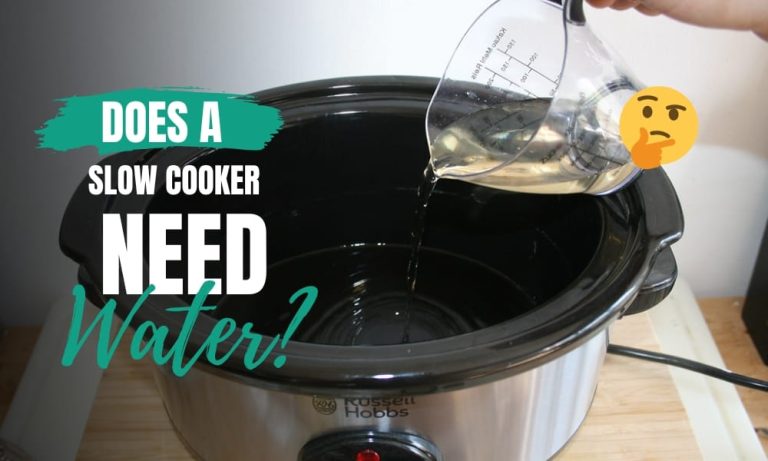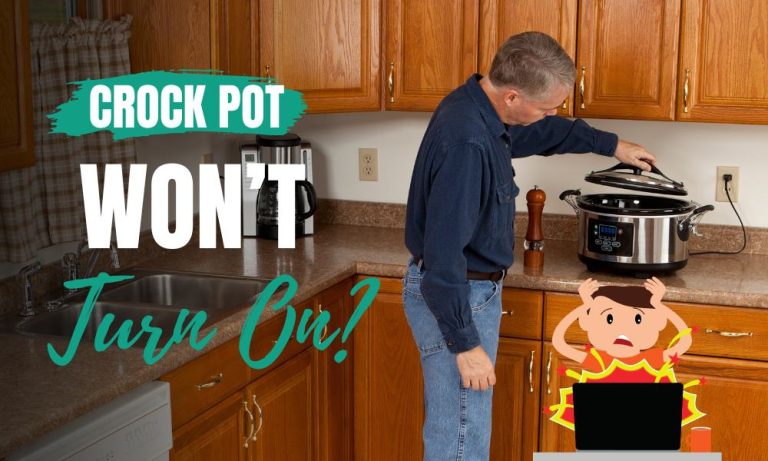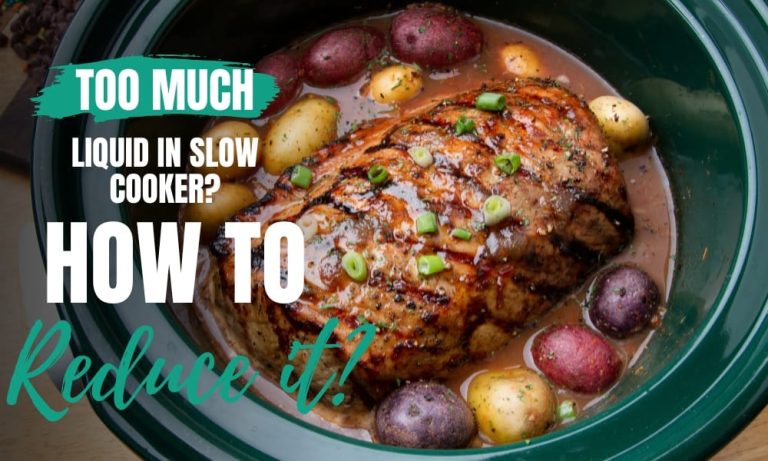Why Do Slow Cookers Crack? Can I Use A Cracked Crockpot?
If you’re an avid slow cooker user, chances are you’ve experienced the frustration of a cracked pot. Slow cookers are beloved for their convenience and ability to produce tender and flavorful meals with minimal effort, but when cracks appear in the pot or lid, it can lead to safety concerns and potentially ruin your dinner plans.
So why do slow cookers crack? In this article, we’ll explore some of the common reasons for cracking and what you can do to prevent it from happening.
Firstly, it’s important to understand that not all slow cookers are created equal. Different brands and models may have varying levels of durability based on the materials used in construction. However, there are some universal factors that contribute to cracking.
One major culprit is sudden temperature changes – if you take a hot pot out of the slow cooker base and immediately run cold water over it or place it on a cool surface, the thermal shock can cause cracks. Another factor is overfilling – if you fill your pot too high with food or liquid, pressure can build up during cooking which may cause cracks in weaker areas of the pot. Additionally, drops or impacts can also lead to cracking even if they don’t seem significant at first glance.
By understanding these potential causes, you can take steps to prevent damage to your slow cooker and ensure its longevity for many future meals.
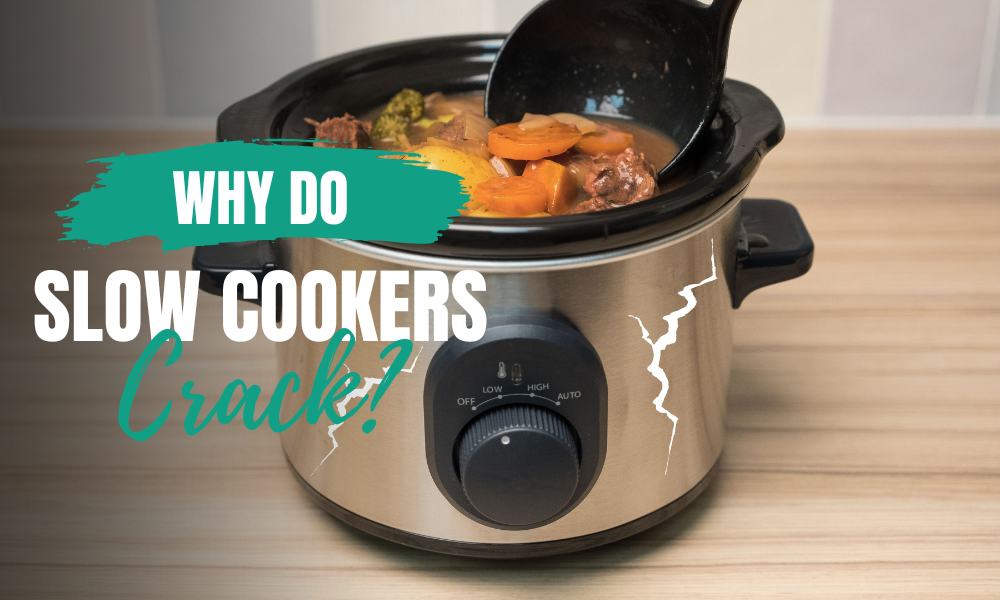
Key Reasons Why Do Slow Cookers Crack?
If you’ve ever experienced a crack in your slow cooker, there are several reasons why it could happen. One of the main culprits is sudden temperature changes. Let’s explore it and any other causes as follows:
Abrupt Temperature Change
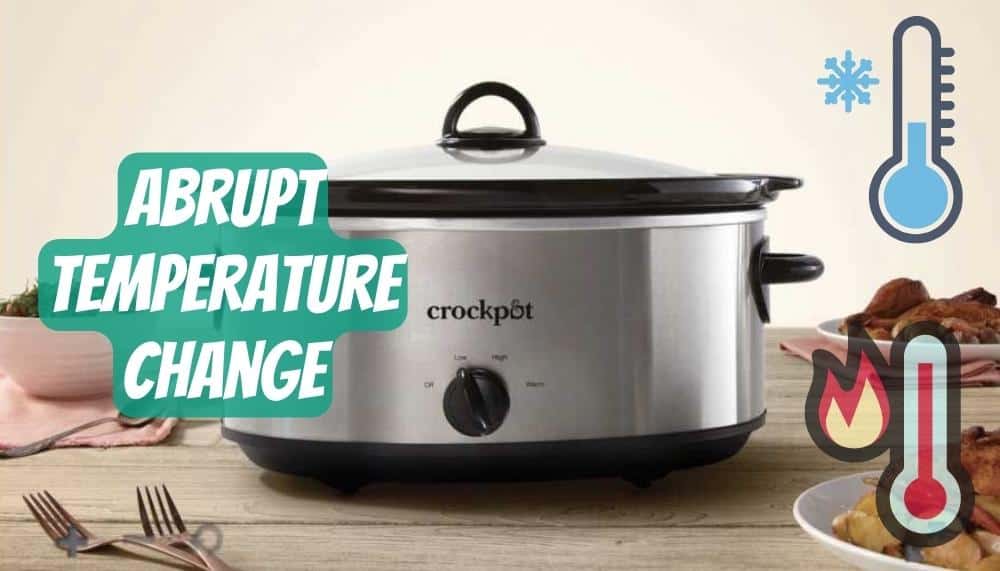
When you take a hot crock pot out of the fridge and immediately reheat it, you run the risk of causing sudden temperature changes that can lead to cracks.
Slow cookers are made of ceramic or porcelain material which is prone to thermal shock. This means that when exposed to sudden temperature changes, they tend to expand or contract rapidly resulting in cracks.
To avoid this, it’s important to let the crock pot sit at room temperature for a few minutes before reheating it. Additionally, never expose a hot crock pot directly to cold water as this can also cause thermal shock and lead to cracking.
Always allow it to cool down naturally before cleaning it with lukewarm soapy water. Remember, taking good care of your slow cooker will not only extend its lifespan but also ensure safe and healthy cooking for you and your family.
Cooking Frozen food
Another reason why do slow cookers crack is putting frozen food in them. To properly cook frozen food in your slow cooker, you should always thaw it completely before adding it to the pot. This is because the sudden change in temperature from frozen to hot can cause the ceramic insert of the slow cooker to crack or even shatter.
It’s important to remember that slow cookers are designed for low and steady heat, not rapid temperature changes. Thawing your frozen food before cooking it in a slow cooker will ensure that it cooks evenly and thoroughly without causing any damage to your appliance.
Lacking enough liquid or Drying Out
Running low on the liquid in your slow cooker is like a car running out of gas on an empty road, leaving your food high and dry. Slow cookers need enough water or liquid to operate properly and maintain the right temperature for cooking. Without it, they can crack and ruin your meal.
Manufacturing defects
Unfortunately, sometimes manufacturers make mistakes and defects slip through unnoticed. Have you ever wondered if your slow cooker has a hidden defect that could put you and your family at risk?
One possible manufacturing defect that can cause slow cookers to crack is the use of low-quality materials. If the manufacturer uses subpar materials in constructing the cooker’s ceramic or metal inner lining, it may not be able to withstand the high temperatures required for cooking, leading to cracking.
Additionally, if the slow cooker is dropped or mishandled during transport, this can also cause internal damage that leads to cracking later on. As a consumer, it’s essential to be aware of these possible issues and choose a reputable brand known for using quality materials and rigorous manufacturing processes.
Using a Crock Pot on the Stove
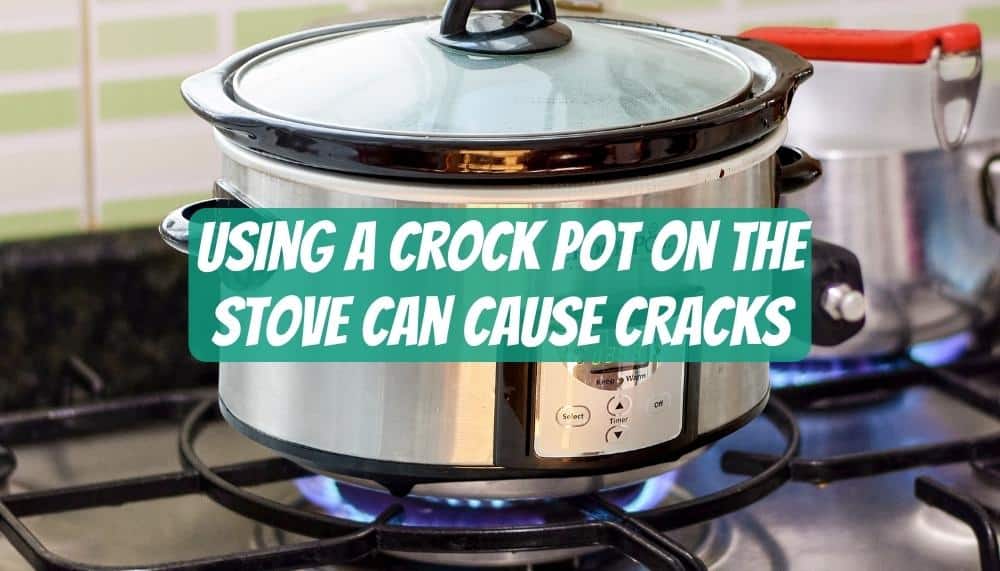
When using a crock pot on the stovetop, it’s important to ensure that the heat source is not too high and that the pot is properly supported. Slow cookers are designed to be used with low, steady heat, which can be difficult to achieve on a stovetop.
If you use a higher heat setting than recommended or place the pot on an uneven surface, it can cause the ceramic material to expand and contract too quickly, leading to cracks. To prevent these issues from occurring, it’s best to use a diffuser or trivet between the crock pot and the heating element of your stove.
This will help distribute heat more evenly and reduce stress on the ceramic material.
Hairline cracks developed with Age
It’s amazing how even with proper care, crock pots can still develop those pesky little hairline cracks as they age. These cracks are mainly due to the repeated heating and cooling of the crock pot over time, causing stress fractures on the surface of the ceramic material.
The slow cooking process involves long periods of heat exposure followed by cooling cycles, which causes the expansion of these hairline cracks to proper cracks.
Effects From Mishandling
Slow cookers are made of ceramic or stoneware materials that can easily break if dropped or bumped against a hard surface. Even small impacts can weaken the integrity of the material and cause slow cookers to crack under pressure.
Additionally, rough handling during transportation or storage can also lead to slow cooker damage. If you travel frequently with your crock pot, make sure it’s securely packed in a padded bag or wrapped in a towel to protect it from potential bumps and jostles.
By taking extra care when handling your crock pot, you can prevent unnecessary damage and prolong its lifespan.
Also Read: How to Slow Cook without a Slow Cooker
Can Slow Cooker Pots Crack In The Dishwasher?
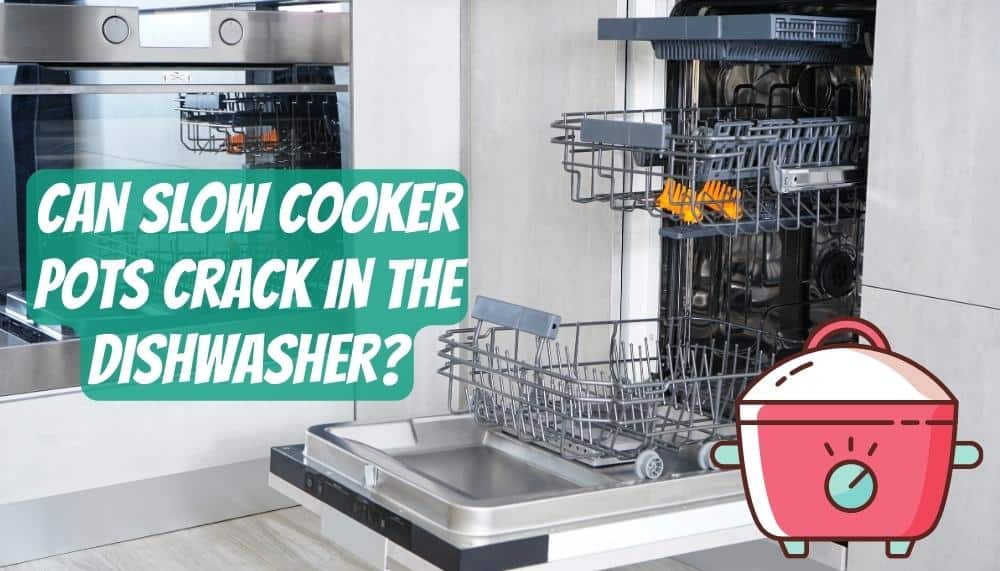
You’ll regret putting your slow cooker pot in the dishwasher because it can easily crack under heat and pressure. The high temperatures of a dishwasher’s drying cycle and the forceful water jets can weaken the glaze on the surface of your pot, making it vulnerable to cracking.
Moreover, some slow cooker pots are made of materials that are not dishwasher safe, such as stoneware or ceramic. If you want to avoid any risk of damaging your slow cooker pot, hand washing is always the safest option.
How To Fix A Cracked Crock Pot Or Slow Cooker
Hey there, looking to salvage your beloved slow cooker with a crack? While it may be tempting to try and fix it yourself, keep in mind that not all methods are reliable or safe.
The first method you can try is using food safe glue. Make sure the glue specifically states that it’s safe for food contact. Clean the cracked area thoroughly and apply a small amount of glue to both sides of the crack. Press them together firmly and let them dry completely before using your slow cooker again.
Another potential method you can try is the hot milk method. This involves filling your slow cooker with hot milk up to the level of the crack and letting it sit for several hours. The theory behind this method is that as the milk heats up, it causes the ceramic material to expand and fill in any cracks or gaps. However, keep in mind that this method may not work for all types of cracks and could potentially cause further damage if not done correctly.
Ultimately, if your slow cooker has a crack, it’s best to consider replacing it for safety reasons.
Can I Use A Cracked Crock Pot?
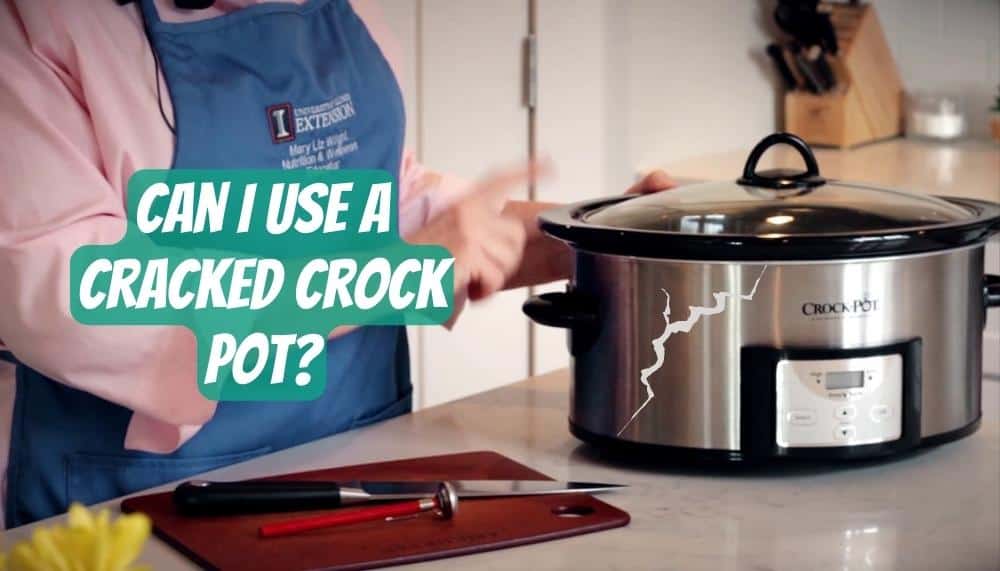
If you’re thinking of using a crock pot with a crack, it’s important to know the potential risks involved in doing so. While it may be tempting to continue using your trusty slow cooker even after it has been damaged, there is a risk that the crack could allow harmful substances to leach into your food.
Cracked ceramic pots can release lead or other toxic materials into your meal. Furthermore, there is also a chance that small fragments of ceramic could break off and mix with your food as well. This can pose a choking hazard or cause damage to teeth if ingested unknowingly.
It’s best to err on the side of caution and replace any cracked crock pots or slow cookers to ensure the safety and health of those consuming meals prepared in them.
Safely Handling Crockpot if Crack Appears While Cooking?
As you’re cooking your meal in the crockpot, suddenly you notice a hairline fracture appear and steam escaping from the crack. This can be frustrating as it may ruin your meal and leave you with a broken appliance.
However, there are some steps that you can take to salvage your dinner. Firstly, if the crack is small, you can eat your meal before throwing out the crock.
However, if the crack is too big or deep, it’s best to transfer your dinner to another pot only if you are using a slow cooker liner. The liner will prevent any shards or harmful chemicals from leaching into your food and allow for safe consumption of your meal.
Remember to replace the cracked pot as soon as possible before using it again.
Frequently Asked Questions
Conclusion
So now you know why slow cookers crack. It can happen due to thermal shock, low-quality materials, and improper handling. But don’t worry, there are ways for avoiding a cracked crock pot or slow cooker.
Lastly, if you notice a crack in your slow cooker lid or crock while cooking, turn off the appliance immediately and unplug it from the power source. Dispose of any contaminated food and clean up any mess before inspecting the extent of the damage.If there is only minor damage, you may be able to continue cooking with caution. But if there is significant damage or safety concerns arise, it’s best to replace your slow cooker entirely.

Mery Webber
Mery Webber, the founder of Kitchen Aims, is a passionate home cook with extensive experience in the kitchen appliance industry. Through her blog, she aims to share her knowledge and help readers create the perfect kitchen.




